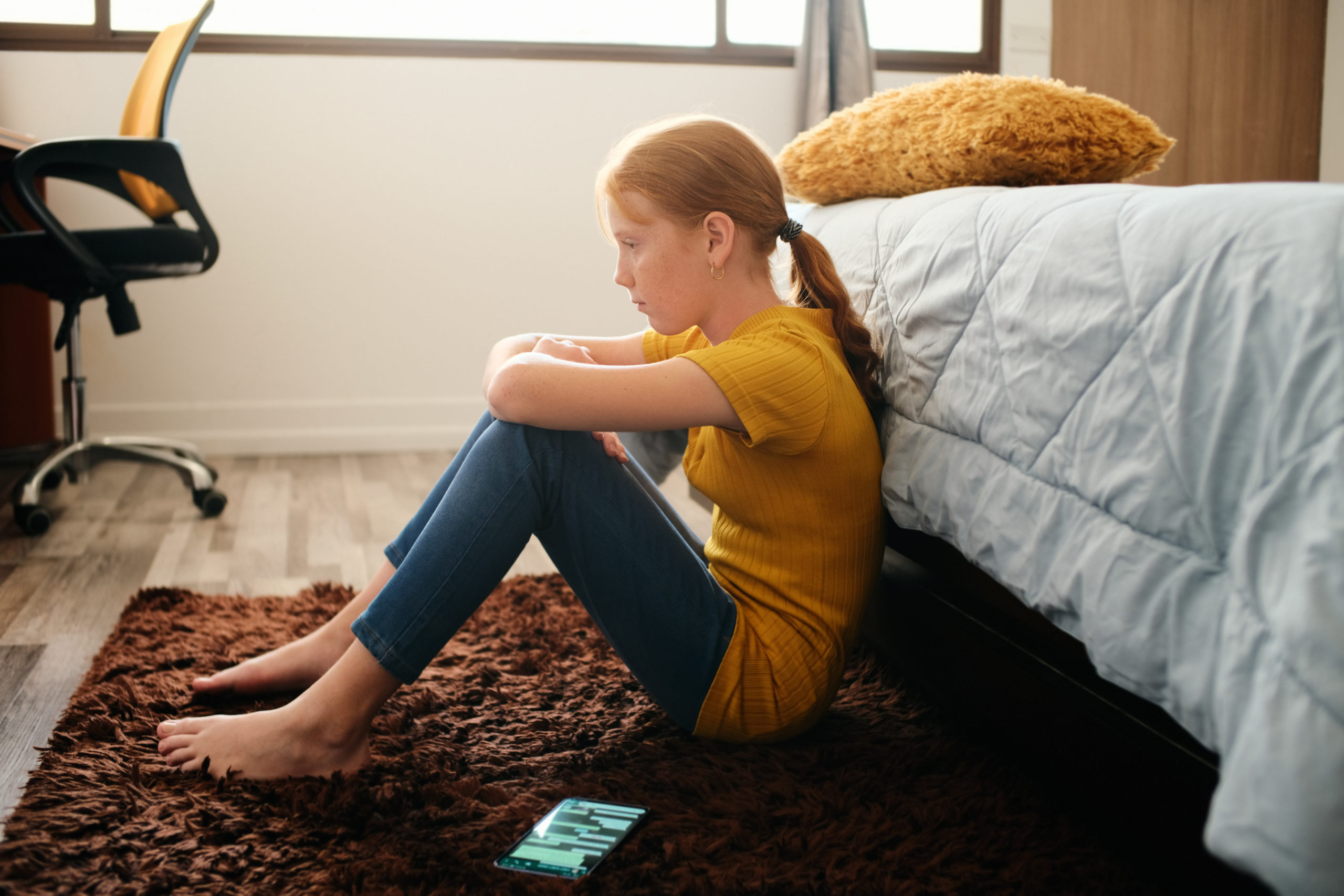I heard the blood-curdling scream coming from the back yard and immediately started deep breathing as I headed toward the playground. I wasn’t sure what I was walking into and tried to remain calm. As I rounded the corner, I saw my 7-year-old daughter near the swings, fists clenched by her sides, screaming at the top of her lungs. “Because he’s 3, he always gets what he wants! All he has to do is whine!” I knew how I responded in the next moments would be crucial. I could either pour fuel or water on her fire.
We all face the same choice when our kids are extra expressive. But knowing how to help a child with big emotions is important because responding well can be like dousing the fire with water. Try these 5 ways to respond to your child’s big emotions.
1. Self-regulate.
Knowing how to help a child with big emotions often starts with knowing and helping yourself. I self-regulate by calming down and connecting with how I’m feeling. Am I flustered? Exhausted? Annoyed? When I do this, I avoid coming in hot and escalating a conflict. I’m practicing breathing and responding calmly and slowly as a way to bring my calm to their chaos. Instead of “Why are you screaming?” a calmer “What’s happening here?” is a gentle shift that encourages connection. And nine times out of 10, my calm encourages my kids to take a breath as well.
2. Resist the urge to ask a million questions.
When kids are overwhelmed and upset, they normally aren’t rational or very good at communicating. I know this, yet I’ve been guilty a million times over of coming to the scene of a conflict with a slew of questions. This doesn’t get us any closer to resolutions and can cause more chaos, yelling, and finger-pointing. Instead, I am practicing approaching my kids with the simple question again, “What happened here?”
3. Offer a break.
Rather than diving into the “he said, she said” battle, I’ve been taking time to offer a hug or a moment to relax in the other room to calm down. I stay with them (if they want), and we sit together until the big emotions wane. This gives me a chance to offer comforts like, “That sounds hard. I can see you are upset. That really hurt your feelings.” Taking time to understand what happened gives everyone a much-needed break from the energy of the conflict.
4. Don’t shut them down.
Shutting down my kid’s emotions with responses like “this isn’t a big deal” or “your brother didn’t mean to do that” doesn’t teach her to regulate, understand, or process her emotions. It says “don’t feel what you’re feeling.” Shutting down someone’s emotions isn’t a kind way to respond. It’s OK for your child to let out all the messy emotions. For sensitive people like myself, this can be a hard practice. Hearing harsh words and big emotions can be overwhelming at times. Sitting with that discomfort has allowed me to grow and better help my children in these tough moments.
Shutting down someone's emotions isn't a kind way to respond. Click To Tweet5. Reflect.
I used to put so much pressure on myself to have the perfect answer for everything right when my kids asked me. Now I often say, “I need to think about this a little more.” Taking time to reflect has helped me clarify the heart of the conflict and have a better plan to chat with my kids. Later, I may take some time to consider the outcome. Was I helpful? Filled with grace? Gentle? As I seek to do everything in love, reflecting on how I responded is helpful, not to measure my performance but to check in with myself. If I wasn’t any of these things, this usually means I need to recharge and rest so I can be the steady mama my kids need when they feel big emotions.
What wisdom can you share for how to help a child with big emotions?
This article was written by Brandee James.










